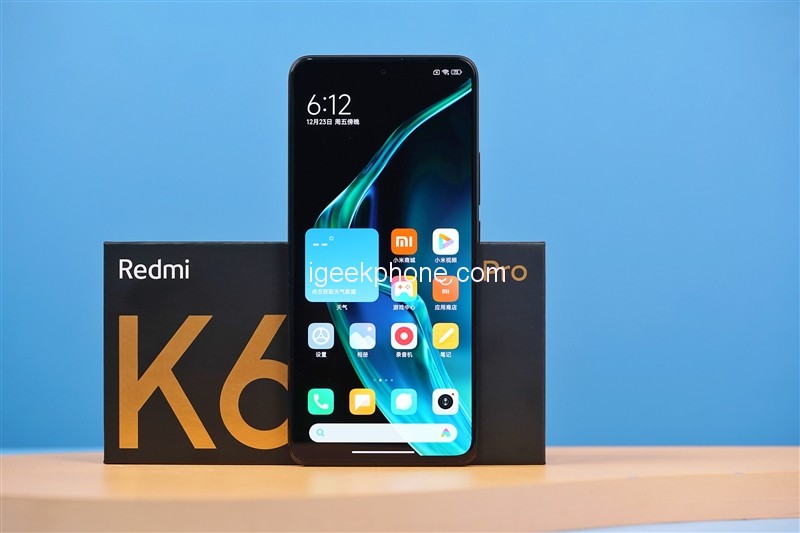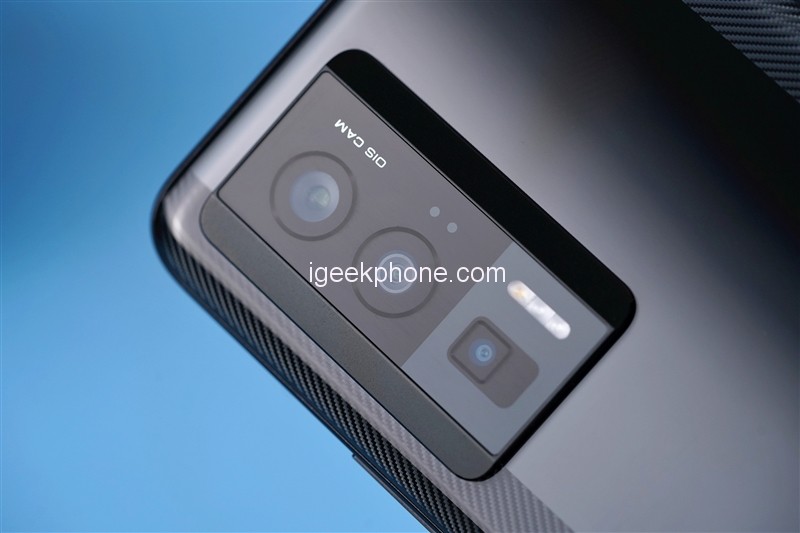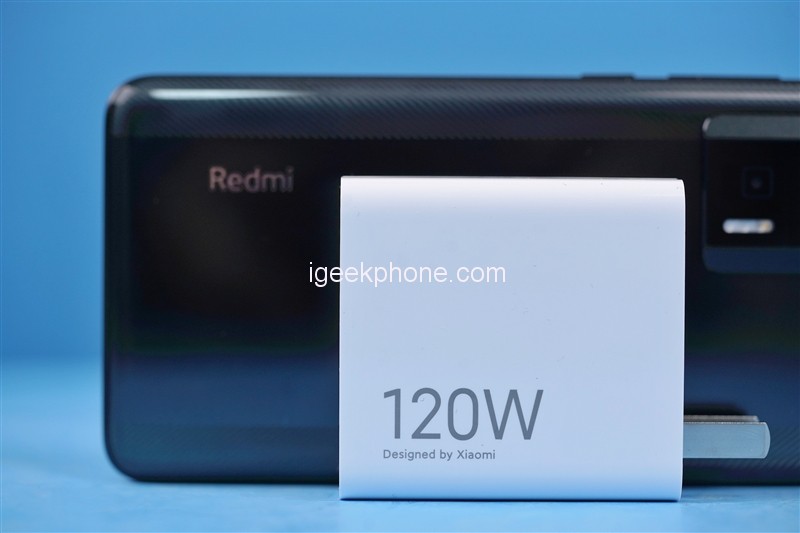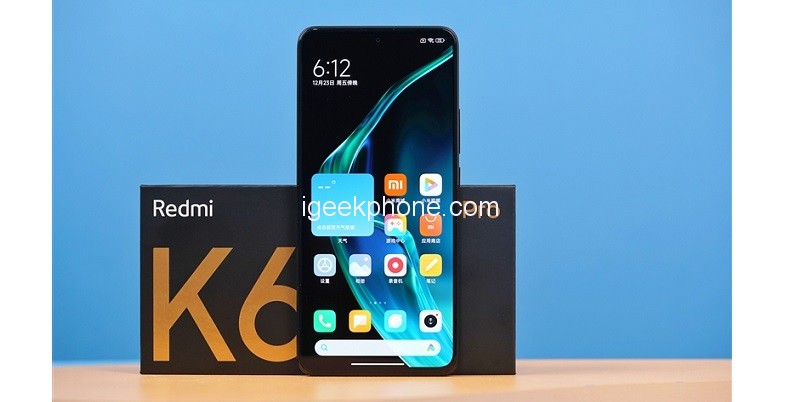It is precisely because of this that almost every generation of the Redmi K series can become synonymous with the “magic phone”. After Redmi completed the full popularization of 2K screens on the K50 series, a year later, the K60 series brought the performance to a new level with Redmi K60 Pro.
A new generation of flagship performance
In terms of core configuration, Redmi K60 Pro uses a new generation of flagship performance three-piece set consisting of the second-generation Snapdragon 8, LPPDDR5X, and UFS 4.0.

After the word-of-mouth decline of the Snapdragon 888 and the first-generation Snapdragon 8 fell off a cliff, Qualcomm changed its past and created the second-generation Snapdragon 8 with lower heat generation and better energy efficiency. It’s well received.
Thanks to the excellent performance of the second-generation Snapdragon 8, Redmi K60 Pro has more possibilities for performance release.
The whole series uses high-end 2K screens jointly developed with China Star Optoelectronics
The K60’s screen is also worth mentioning. After K50 popularized 2K screens, all K60 series now use high-end 2K Chinese screens jointly developed and tuned with China Star Optoelectronics. The 6.67-inch OLED flexible straight screen on the Redmi K60 Pro supports a resolution of 3200×1400, 526 PPI, a contrast ratio of 5 million: 1, and a local peak brightness of 1400nit.

There is also a 12-bit color depth, which can display 68.7 billion colors, which is 64 times more than the 1.07 billion colors of the 10-bit color depth, as well as end-to-end P3 color management, full-link HDR, Dolby Vision, HDR10+, etc. These features are all It is a feature that only high-end flagship screens have.
There are also 1920Hz PWM dimming and SGS low visual fatigue certifications to ensure that users can watch normally in dark-light environments.
IMX800 and 30W wireless fast charging
This time, the Redmi K60 Pro also upgraded the rear main camera, using the IMX800 sensor, and also equipped with Xiaomi Imaging Brain 2.0. There is also OIS optical image stabilization + EIS electronic image stabilization to provide a double stability guarantee. Whether you want to take pictures or videos, it can provide a good enough experience.
The charging has also been upgraded. In addition to the original 120W wired fast charging, a 30W wireless fast charging has been added. This was only available on flagship models in the past, but now it is equipped with K60/K60 Pro.
The picture below shows the specification information of the Redmi K60 Pro:

Redmi hopes to greatly lower the barriers to entry for wireless charging so that more users can experience this convenient technology that can be easily placed and charged at any time.
Appearance
The overall size of the Redmi K60 Pro is 162.78×75.44×8.59mm, and it weighs about 205g. The front is equipped with a high-end 2K Chinese screen jointly developed and tuned by Redmi and China Star Optoelectronics.

This 6.67-inch OLED flexible straight screen has a resolution of 3200×1400, 526 PPI, supports 12bit color depth, can display 68.7 billion colors, and has a contrast ratio of 5 million: 1. The standard flagship panel, the display effect is also delicate enough.

It also supports 1920Hz PWM dimming and hardware-level low blue light, so you don’t have to worry about the screen flashing to hurt your eyes when playing games in low light.

Because the OLED panel is used, it does not emit light in pure black color, and the display is deep enough.

The COP packaging process compresses the black border at the bottom of the screen to 2.42mm. Although the chin is a little longer when you look closely, the visual effect of the four borders is very consistent and does not appear abrupt when I use it daily.

Ink feather color matching, a very fast Kevlar texture is used on both sides of the fuselage, and the two sides of the rear camera are excessively shaped with three-dimensional metal DECO ridges. The shape of the sports car gives people the feeling of being cruel and fast enough.

The Kevlar texture details are actually covered with a layer of glass on the surface.

The details of rear camera of the Redmi K60 Pro use a solution consisting of a 50-megapixel IMX800 main camera lens + 8-megapixel ultra-wide-angle + 2-megapixel macro lens.


The top and bottom details of the fuselage are equipped with a conventional Type-C port, SIM card slot, dual speakers, noise-canceling microphone, infrared remote control, and other configurations.

Included in the package are a water jacket, card pin, manual, 120W charger, and data cable.


The details of the 120W GaN charging head are smaller and lighter than the previous generation and support 15W/18W/66W/120W multi-level handshake protocols.
Benchmark
The Redmi K60 Pro uses a new-generation performance three-piece set consisting of the second-generation Snapdragon 8, LPDDR5X, and UFS 4.0.
The second-generation Snapdragon 8 mobile platform is the most popular flagship recently. It adopts TSMC’s 4nm process and is a brand-new 1+2+2+3 architecture, that is, a Cortex-X3 super core with the main frequency of 3.2GHz + four 2.8 GHz performance core (2×Cortex A715+ 2×Cortex A710) + 8-core solution composed of 2.0GHz Cortex-A510 energy efficiency cores.
The new generation of self-developed Adreno GPU architecture brings 25% performance improvement and 45% energy efficiency improvement. There is also the 8th generation AI Engine, which improves AI performance by 4.35 times and energy efficiency by 60%. The powerful platform performance makes the overall performance of the Redmi K60 Pro far beyond the past.
AnTuTu

Redmi K60 Pro scored 1,300,900 points on AnTuTu, surpassing nearly 99% of users. In the performance release of Android models, it belongs to the first echelon level of the new generation.
Among them, the CPU score is 272262 points, the GPU score is 579439 points, the memory score is 259882 points, and the UX score is 189417 points. Compared with the previous generation of Redmi K50 Pro, which has a similar positioning, the total score has an upgrade rate of 27.6%.
GeekBench 5

In GeekBench 5, the single-core score of the second-generation Snapdragon 8 on the Redmi K60 Pro is 1462 and the multi-core score is 5038. Compared with the Dimensity 9000 used in the previous generation, single-core and multi-core have performance improvements of 11.4% and 13.6%, respectively.
GFXBench

In terms of graphics, the GPU of the second generation Snapdragon 8 ran 153 FPS, 180 FPS, 128 FPS, 222 FPS, 326 FPS, 488 FPS in Ruin OpenGL, Ruin Vulkan, Racing Chase, Manhattan 3.1, Manhattan, T-Rex grades. The upgrade rate from the previous generation Redmi K50 Pro is also very obvious, reaching an overall upgrade rate of 46.1%~65.1%.
AndroBench

The Redmi K60 Pro we received uses the UFS 4.0 specification for flash memory. In the actual measurement, the sequential reading speed can reach 3472.19MB/s, and the sequential writing speed can reach 3016.46MB/s. Compared with the previous generation, the speed is almost doubled. After installing APP, Game map loading can bring a faster experience.
Games Testing
Redmi K60 Pro also brings FEAS 2.2, which is Xiaomi’s self-developed intelligent frame stabilization technology, which can intelligently predict current performance requirements, dynamically adjust performance and power consumption frame by frame, and achieve a two-way balance between frame rate and power consumption.
Coupled with the blessing of FBO’s new storage technology, it can effectively avoid the decline in read and write performance after long-term use of the mobile phone, allowing users to enjoy the smooth experience of a new mobile phone in games.
GKART


In “GKART”, we turn on the ultra-high-definition picture quality, and we select an ultra-high-definition resolution and extremely high frame rate.

During the game battle, the average frame rate of “GKART” was 120.6 FPS. This performance is not too stressful for the second-generation Snapdragon 8, which is a normal level.
Honor of Kings


In “Honor of Kings”, we changed the frame rate to extremely high and the resolution to ultra-high, and the overall picture quality at this time is the ultimate.

During the 10-minute game of “Honor of Kings”, the average frame rate is about 120.5 frames, and the game curve is stable enough without too obvious fluctuations.
Original God


In the hardware killer “Original God”, we changed the picture quality to extremely high, and on this basis, we changed the frame rate to 60 frames.

During the period, we ran randomly on the new map of Sumeru City for half an hour. The resolution of the captured game was 1920×864. During this period, no overheating and throttling was triggered. The average frame rate was around 59.6 FPS, which can be said to be a full frame Level up.

The average power consumption of “Yuan Shen” is only 4.9W, which is much lower than the 6W~8W power consumption of the first-generation Snapdragon 8+.
After running “Yuan Shen” for 15 minutes/half an hour, using an infrared temperature control gun, it was detected that the temperature in the area where the second-generation Snapdragon 8 chip is located is between 41.5 degrees Celsius, and the fluctuation is not too large.

It can also be seen that the Redmi K60 Pro uses a 5000mm² ultra-large VC as the core and cooperates with a total of 17 layers of high thermal conductivity graphite and copper foil in 6 places to form a high-power three-dimensional cooling system covering all heat-generating areas. The performance is indeed stable enough.
The Redmi K60 Pro is equipped with three cameras, the most noteworthy of which is the IMX800, which is the same 1/1.49-inch sensor as the Mi 13, with a single pixel size of 1 μm, which can be combined to obtain an equivalent 2.0 μm large fusion pixel. , Even in a dark environment, it can increase the chance of filming.
Camera Testing
Main camera








With the support of the IMX800’s outsole, you don’t have to worry too much about the amount of light entering when taking pictures. Most of the real shots above are mainly at night, and the details of light and shadow are preserved to the greatest extent. It is not to brighten the picture roughly, but to The overall style is accurately restored.

Even in the 2x zoom mode, the Redmi K60 Pro has excellent imaging quality, good resolution and color performance, especially the ghosting and glare in each scene are well controlled. Coupled with OIS and EIS dual anti-shake, and the blessing of Xiaomi Imaging Brain 2.0, even in night scenes, you can take pictures at will.
However, in some scenes, the highlight suppression is not good enough, giving people the impression that the light is overexposed. It may also be that we received the engineering machine version. We hope that these problems can be improved when the official version is launched.
Ultra Wide Angle

Super wide angle 0.6x

The main camera 1x

Super wide angle 0.6x

The main camera 1x
Although the ultra-wide angle is only 8 million pixels, daily recording is no problem.
In the case of heavy smog in this season, this ultra-wide-angle lens can accurately and clearly record the current scenery, and keep the white balance as consistent as possible with the main camera. There are no problems such as color cast in the above real shots. If you want to shoot magnificent The building is very suitable.
Camera snapshot
Redmi also brought a camera snapshot function to the K60 Pro, which optimized the snapshot logic through self-developed algorithms and underlying optimization.

This is also inseparable from the support of powerful performance and image computing power. With the support of the IMX800 sensor, OIS optical image stabilization, and Xiaomi image brain, the speed-up of image taking is realized.
In the experience, the camera directly completed the framing and focusing operations as soon as the camera was turned on. The user only needs to quickly press the shutter, and the shooting response is very fast. During the continuous shooting process, there is no need to repeat the focus, which is really very convenient. During the snapshot process, the Redmi K60 Pro Can record clear enough photos but also has a very high rate of filming.
Charging and Autonomy test
Charging test
The Redmi K60 Pro adopts Xiaomi’s self-developed surging P1 charging chip single-cell fast charging solution, which only needs to input 20V/6A voltage and current at the charger end, and split it into two 20V/3A voltage and current, respectively, through two surging P1 charging chips4 :1 Buck up the current to 5V/12A, and finally combine it into a 5V/24A voltage and current.
So far, Redmi has ingeniously overcome the difficulty of charging greater than 100W on a single-cell battery in the past, allowing the Redmi K60 Pro to have both fast charging and a large battery.

We turn on the fast charging acceleration when charging, and start charging from 5%, it only takes 10 minutes to charge to 66%, 15 minutes to charge to 84%, and it only takes 22 minutes to fully charge.
Endurance test
For the battery life, we use a professional battery life test tool – the battery dog produced by Kuai Technology.
In terms of test items, we chose the extreme power battery life test and checked all the test items including CPU high voltage, CPU multi-threading, AI recognition, picture browsing, video playback, and web browsing to simulate user usage scenarios and restore the real load to the greatest extent. Infinitely close to the real power consumption.

We set the brightness to 50% manually, the resolution is FHD+ ultra-clear display, and the dynamic selection of refresh rate is up to 120Hz. Because it is equipped with a 5000mAh battery, the hardware dog gave a battery life result of 8 hours and 56 minutes when measured from 100% power to the remaining 1% power.
Compared with our previous models with 4700mAh batteries, the Redmi K60 Pro has an extra hour of battery life. For users who are often away, it can allow you to persist until you go home, avoiding the embarrassment of running out of power on the road.
Conclusion
Judging from the above experience, Redmi K60 Pro is full of sincerity in all aspects, and it is aimed at the position of the “flagship goalkeeper” in 2023.
From the perspective of tuning, the energy efficiency ratio of the Redmi K60 Pro is extremely good. In half an hour of “Yuan Shen”, 4.9W brings a nearly full-frame experience, and it is easy to realize the whole process without locking the frame rate and without reducing the resolution of the screen. Excellent performance without reducing brightness.
The temperature control is also really good. The temperature of the back chip area is only 41.5 degrees Celsius, which was only achieved by gaming phones equipped with passive cooling in the past.
In terms of performance release, Redmi K60 Pro is indeed worthy of the title of “performance flagship”. No wonder Redmi officially said that it will cancel the e-sports version, and it really has this confidence.
In order to provide a high-end experience for direct-screen mobile phones, it also uses a high-end 2K Chinese screen jointly developed with China Star Optoelectronics. This screen is indeed excellent, with a diamond-like arrangement and a more delicate display. It has achieved the same level as Samsung’s high-end flagship screen.

The IMX800 rear camera also brings enough surprises for night shooting, coupled with OIS and EIS dual anti-shake, and the blessing of Xiaomi Imaging Brain 2.0, allowing users to take excellent photos at their fingertips, especially the quick shot camera function, just take out Take out your phone and press the shutter to record the beautiful moment of the moment.
120W wired fast charging can be full of blood in 22 minutes at the fastest, which is more than that. Redmi hopes to popularize 30W wireless fast charging so that users can charge at will so that mobile phones can be full of blood at any time.

Coupled with a large 5000mAh battery, it can easily achieve nearly 9 hours of battery life, which is 1 hour longer than ordinary mobile phones, so that users no longer have battery life anxiety.
Each generation of the Redmi K series starts with a lot of material, conquers users with full sincerity, and brings users a more comfortable flagship mobile phone experience on the basis of continuously enhanced performance. This Redmi K60 Pro, which has enough performance, screen, and video, is the most cost-effective flagship gaming phone at a price of around $500.
Read Also: Huawei Children’s Watch 5X Will be Released Soon With Dual Screen
Do not forget to follow us on our Facebook group and page to keep you always aware of the latest advances, News, Updates, review, and giveaway on smartphones, tablets, gadgets, and more from the technology world of the future.











